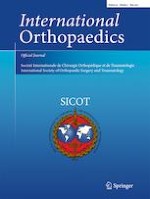Erschienen in:

26.03.2020 | Original Paper
Evaluation of arthroscopic skills with a virtual reality simulator in first-year orthopaedic residents
verfasst von:
P. Walbron, H. Common, H. Thomazeau, F. Sirveaux
Erschienen in:
International Orthopaedics
|
Ausgabe 5/2020
Einloggen, um Zugang zu erhalten
Abstract
Purpose
This study of residents’ initial performance was performed to determine which factors predisposed residents for success in demonstrating the best arthroscopic skills.
Methods
Each orthopaedic first-year resident was officially invited to take part in a one hour evaluation on a VirtaMed™ ArthroS™ simulator. On the FAST module, the Periscoping exercise was chosen to test for use of angled optics. The Shoulder Module was chosen to test their ability to extract intra-articular foreign bodies using the Catch the Stars exercise. The variables such as time, camera alignment, camera path length, and grasper path length were analysed. Residents completed a questionnaire prior to the evaluation. Their results were analysed according to gender, orientation assessment, and surgical history.
Results
A total of 34 women and 82 men were included in the study. In the Periscoping exercise, a significant difference between women and men in the time variables was noticed (275 ± 82 and 195 ± 71; p < 0.00001) and camera path length (207 ± 60 and 170 ± 66; p = 0.00094). For the Catch the Stars exercise, there was a significant difference between women and men for the time values (249 ± 114 and 201 ± 99; p = 0.01246) and grasper path length (290 ± 130 and 229 ± 108; p = 0.00493). After multivariate analysis, no influence of self-assessed spatial perception (p=0.1), number of arthroscopic procedures (p=0.39), or laparoscopic procedures (p=0.43) to which they had already assisted was found.
Conclusions
This study shows a significant difference in skills regarding spatial recognition and triangulation related to gender at the beginning of specialization training. It also demonstrates that male medical students are more attracted by surgical departments during their medical training.